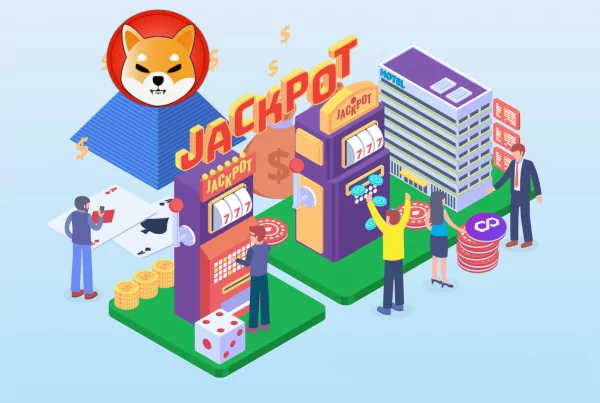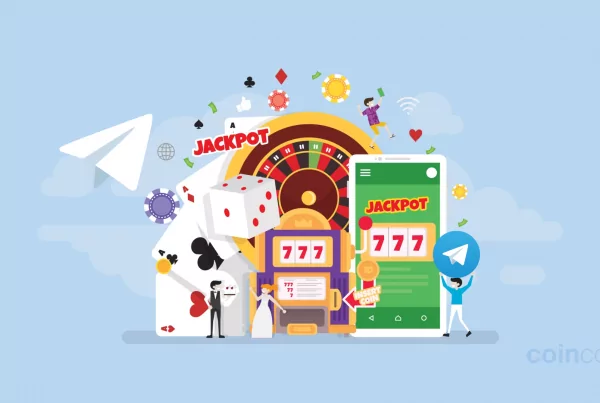
Christmas has come early in the cryptoland in 2021. Having been described as the best performing asset class of 2021, the $2.39 trillion market cap for cryptocurrencies is a holiday gift the mainstream can’t afford to ignore. Now, this has its real-life implications, no matter how you feel about the Year of Crypto – people are going crazy with buying gifts online and at brick-and-mortar stores and the payments are being increasingly made with cryptocurrencies.
Yet, the post-pandemic shopping craze has driven merchants and buyers crazy, as all of these transactions are made with various cryptocurrencies one can hardly keep track of. How do we make things easier for both the shoppers and businesses without having to rely on Santa Claus and his magic bag?
In Search of the Chain
While the literal shopping spree powered by the blockchain seems like an unexpected present for all crypto aficionados, there is no time for celebration. A shadow of bottlenecks is acting like a Grinch for all of those who want to see crypto payments become equal peers to cash and cards.
These bottlenecks refer to the creations of silos around individual chains that can support holiday shopping. For the sake of a thought experiment, just imagine that you saw a perfect holiday gift that can be paid for in Ethereum. Once you purchase it, you get to your favorite diner only to discover that it accepts Dash. Or, even worse, a food-themed Munchotoken (OK, scratch out that fictional one). Despite your protests, there is nothing stopping the industry or an individual establishment to adopt the best token for the goods and services it offers, holidays or not.
What you can do next is to go down the route of an unwanted holiday tour of the exchanges and swap Ethereum for Dash in order to buy a simple hotdog. Once you finally get the right currency, you get a glimpse of yet another perfect holiday gift, but, this time, the price tag is attached with yet another currency symbol.
If you decide to (once again) convert your Ethereum, the price of the item in question (and the meal that came before it) goes up just by the amount of the conversion fee you had to pay to the exchange. It quickly amounts to a substantial sum that leads you to question your New Year’s decision to go all crypto in 2022.
How do we get around this?
Order from Chaos
With this “cacophony” of currencies and accepted payment methods that are part of the holiday season in the cryptoverse, you can only try to imagine what the future will look like if we are to use blockchain technology as often as we want.
Do we abolish the Crypto Wild West altogether and let the one currency prevail?
No.
Wanchain is the project that sets its sights on preventing this future scenario, but its work has already started in the present when it was launched as a hub that collects all the blockchain transactions. First of all, the platform is chain-agnostic, meaning that no matter what chain the payment is made from, Wanchain will provide a bridge between the customer and the goods and service provider.
To better understand this, let’s get back to the imaginary Ethereum coin purse you want to make thinner during the holidays. With Wanchain, you get access to a Wan wallet that exists on its chain. You can simply store Ethereum in this wallet and then, bam, you immediately get the opportunity to conduct cross-chain transactions that involve assets on other chains.
Wanting Interoperability for Christmas
Cross-chain transactions describe the support for the interoperability between two or more blockchains that have been originally designed as independent systems. This is done by providing support for asset swap and asset transfers by which the users can get around the obstacle of being limited to the chain their assets exist on. With Wanchain, these assets can be transferred and integrated across diverse chains, no matter how siloed or self-sufficient they may appear in their existence as a single ecosystem.
This goes beyond mere payment across chains and the storage of your precious tokens in a Wan wallet. As an entry ticket to participating in the wealth of opportunities offered by DeFi, Wan wallet can be a holiday present-turned-investment.
Take, for example, Wanchain’s cross-chain integration with XRP assets from Ripple. Users that own native XRP can cross-chain it to take part in various DeFi applications, including WanSwap. “Various” does not really cover it, but let’s mention at least the most popular financial applications such as the provision of liquidity, lending, mining, pledging, and others.
Yes, the cross-chain will surely bridge the world of mortals and the DeFi in the months ahead of us. In the meantime, the draw of easy exchange of assets at low fees and the ability to support any partner network that wants to jump on this bandwagon will make value-exchange hubs such as Wanchain a regular partner of our future holiday (and non-holiday) shopping expeditions.
Conclusion
We started this overview with a reference to the holiday season as the perfect time for reflecting on the limits of blockchain-based payments. Yet, this issue will hardly fall into obscurity once the age of reindeer-powered shopping is over. Actually, closing the gap between the lofty goals of the decentralized cross-chain payment and its real-life application is a year-round task for all who want to see the everyday application of the blockchain become a holiday wish-come-true.



